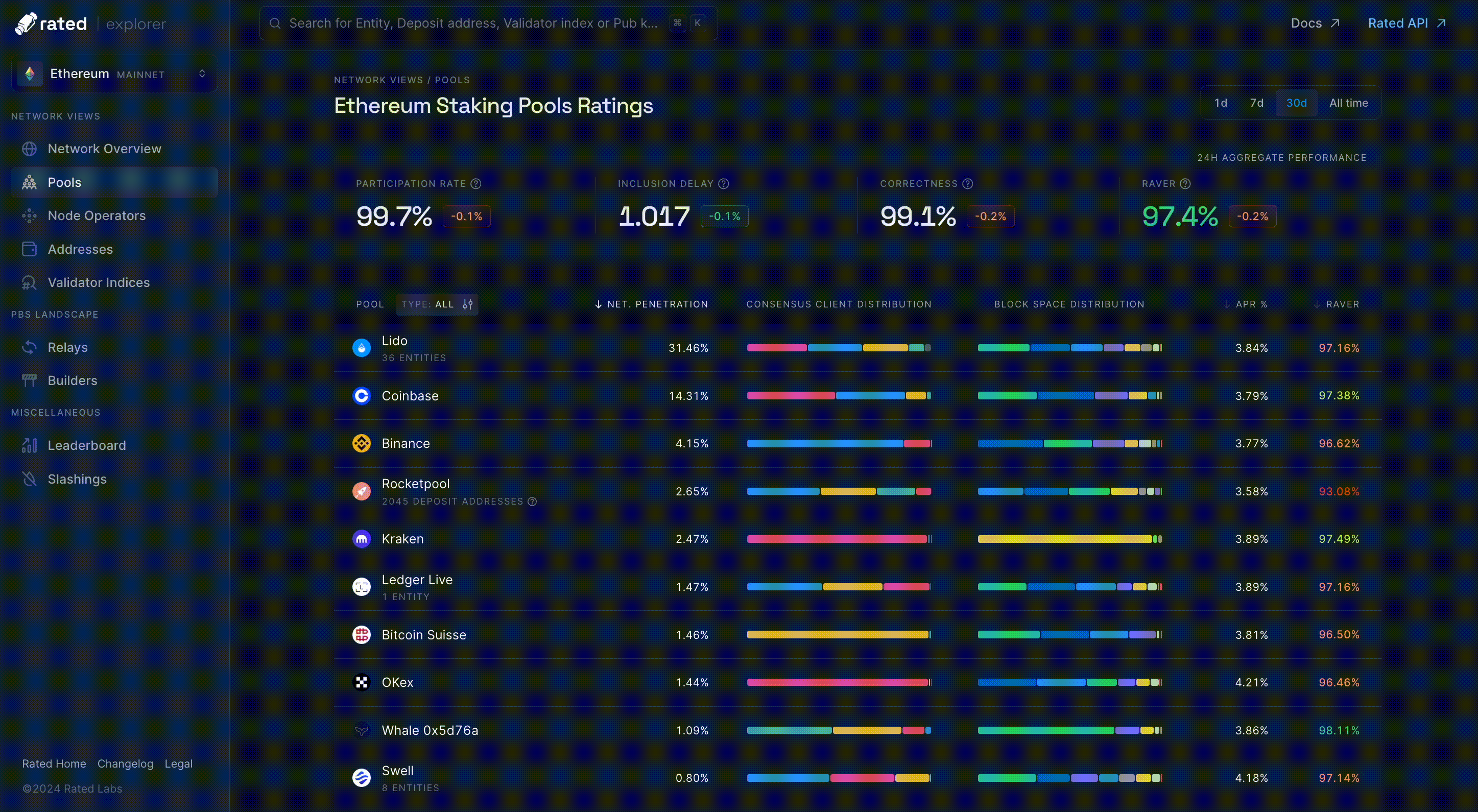Counters
At the top of the Pools list page sit four counters that show the aggregate performance of the network on the previous completed day. These are normally helpful in quickly referencing how an entity is performing compared to the network average.
The counters at the top of the Entity views landing pages.
For a deeper dive into what each of these metrics represents, please visit the Effectiveness breakdown page in the documentation.
- Name
- Network penetration
- Consensus client distribution
- block space distribution
- APR%
- RAVER (Rated Effectiveness Rating)
You can sort the table by Network Penetration, APR% and RAVER. You need simply click on the metric you want to sort by!

Sort by Network Penetration, APR% and Effectiveness
Network penetration
This is the percentage distribution of stake that maps under any given pool. We calculate this as:In order for a validator to become “active” on the network, it needs to (i) be funded with a balance of at least 32 ETH, and to (ii) get past the activation queue stage.
Client distribution
This is the percentage distribution of consensus clients an operator or entity is running across the body of validator indices that it operates.In order to produce client distribution statistics for validator keys and across entities, we are using blockprint, an open source client classifier. Please note that the results that blockprint produces have a relatively wide statistical confidence interval.
Block space distribution
Since The Merge, validators have the ability to outsource block production to specialized entities called “Builders”, and effectively “shop” for pre-packaged blocks through an interface agent called the “Relay”. The Block Space Distribution column on the Explorer displays the distribution of blocks as it relates to the origin of those blocks. The explorer currently segregates between the different Relays blocks were procured from, as well as blocks that were built locally (showing in the distribution bars as “vanilla blocks”).APR%
Please refer to the APR% section of the documentation for a deep dive into how we compute this metric.Effectiveness Rating
The Rated model of validator performance. The colour coding in each of those values hints to the relative performance of the entity.For more information on how this is computed and the methodology behind it, please refer to the Rated Effectiveness Rating page. You can also learn more about how we rank for relative performance via Rating percentiles.

